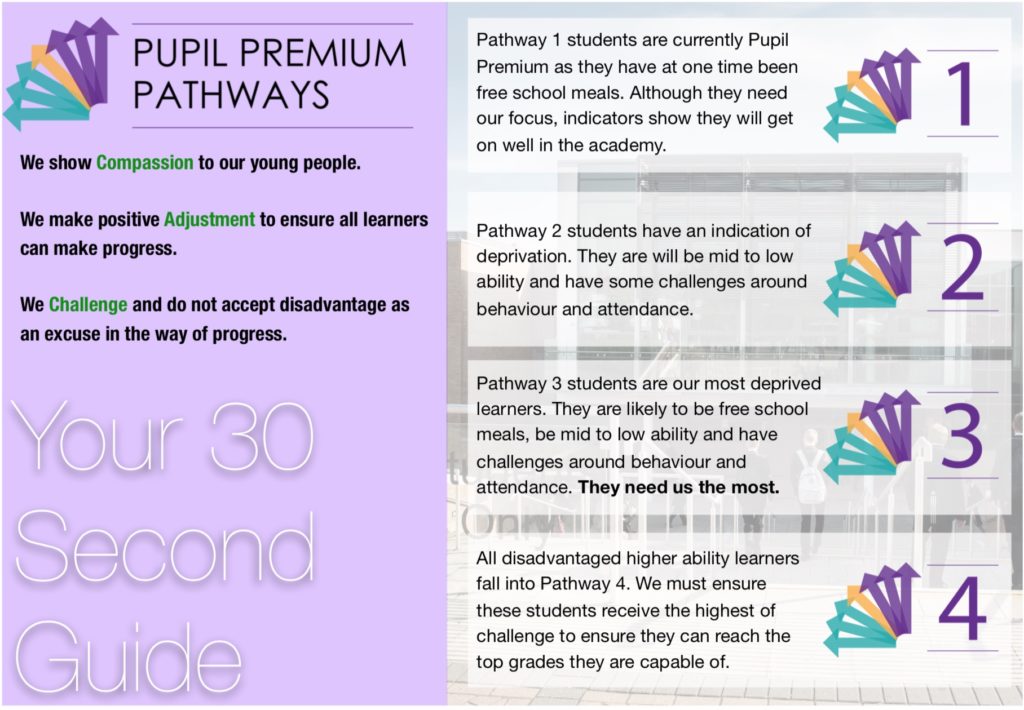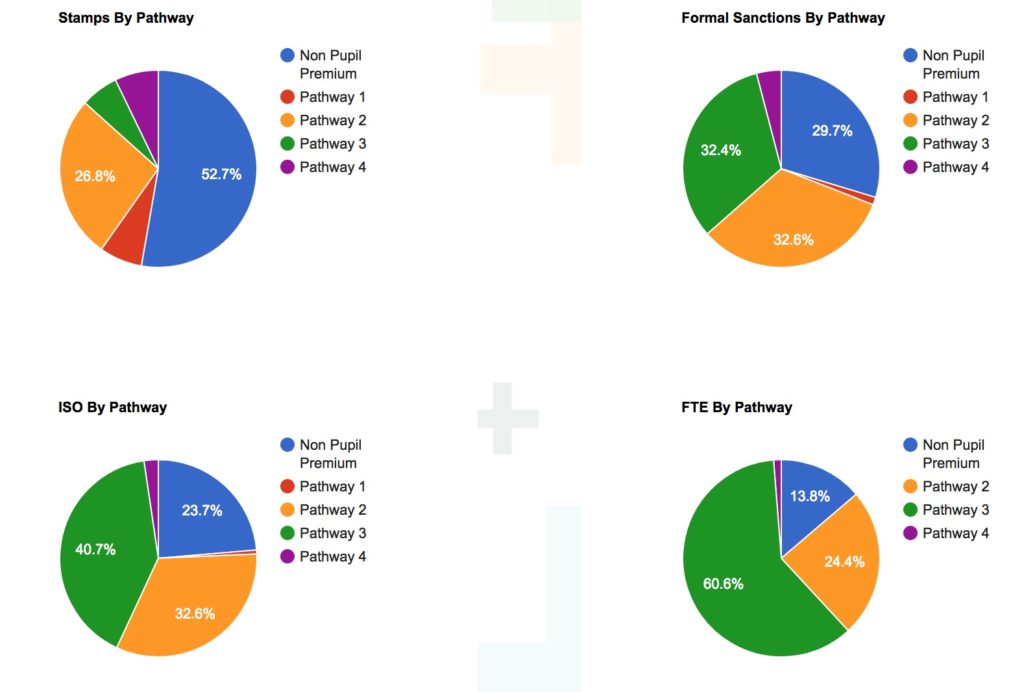As with most inner-city schools, pupil premium is a major priority for us. We focus on results and accountability, but most importantly in my view is the moral focus on changing the life chances of disadvantaged young people. It is up to us as professionals to break down the barriers these young people have and provide them with the tools to reach their potential and break the cycle they are likely entrenched in.
An individual student with pupil premium may carry the label of ‘disadvantage’ and we must do something extra for that child to overcome that. Now, in a school where 50% are disadvantaged, can all pupils who carry that label of PP be the same and therefore approached the same?

Since pupil premium (Ever6) takes into account free school meals from the past six years, not all pupil premium students will be at the same stage. With this in mind, we considered what other factors make up a pupil premium student within our academy. After several weeks looking into this at the end of last academic year, I came up with an algorithm of sorts that would produce a pathway numbered 1-4 for students based on:
- whether currently on free school meals
- level of deprivation (based on postcode)
- attendance and behaviour in previous year
- banding
- key staff context.
This meant that as a leader of pupil premium I had four distinct groups, across the school and each year group, which could be looked at individually.
What does each number mean?
Pathways 1-3 comprise a sliding scale with 1 being a student who is PP but will not need much in the way of extra support, whereas 3 are our most in need. These are the students with the most difficult behaviours, learning deficits and background, and they will need as much support as possible. Therefore as a teacher who may have a pathway 3 student, a simple initial reaction to this would be to sit them with a high ability non-pupil premium student (ZPD).
Pathway 4 is for high ability PP students. This fits with our push to challenge our high ability learners to do their very best, and for us to lay down the line that disadvantage is not an excuse against making progress. Our teaching staff and students need to be sure that they are doing the very best they can to achieve the best outcomes.
30 Second Guide For Staff
What is the point in doing this?
The pathways are there to act as an indicator for teaching staff on what differentiation, amendments in class and focus they will need to put on individual pupil premium students. This replaces the single banner that puts all disadvantaged students in the same box. It means as a staff body we can look to be bespoke in our approaches and be more proactive and less reactive.
So far this year the pathways approach has certainly been effective with our pathway 3 students: those who have been most challenging and have previously been bounced around our behaviour systems. Knowing who these students are from the start means we can put the provision in place for them and really get in there early before they begin to lose focus in their learning. Among other things, pastoral leaders can set bespoke groups for specific interventions, and I can meet with colleagues to set up projects to work with targeted groups.
The system is in its infancy and I know there is a long way to go to turn around the pupil premium ship. However, I feel that we are raising the profile of these students, setting out clear outlines of the who and the how. Now we need to see the improvements in the data.
End Of Term 1 Reflection
It is clear that the pathways do have value. We are seeing that the data demonstrates our most challenging students in terms of behaviour and attendance are our Pathway 3 students. Our 1 and 2 Pathway students show that level of decline expected and that they fall into general whole school averages. This means we can be proactive and less reactive and the algorithm of data does work.
The % spread above gives a clear view that the spread of sanctions falls heavily onto Pathway 2 & 3 students and therefore interventions and proactive work can be placed into those students.
Feedback
Staff feedback has been really positive about the system and the reasoning behind it. During a recent training provider Ofsted inspection, the inspector stated that he was “Extremely interested and fascinated in the ANT system and Pupil Premium Pathways”. He stated that in his experience “this is the most systematic and detailed method of highlighting disadvantaged students he had seen and the approach will lead to teachers, such as those observed this morning, having a clear understanding of the context of the students in their class and strategically planning interactions to diminish differences”.
The future of this methodology could be really powerful when fully embedded in every part of the school.
Original SSAT Post
Click here to view the post published via SSAT.
2,117 total views, 0 views today


Leave a Reply